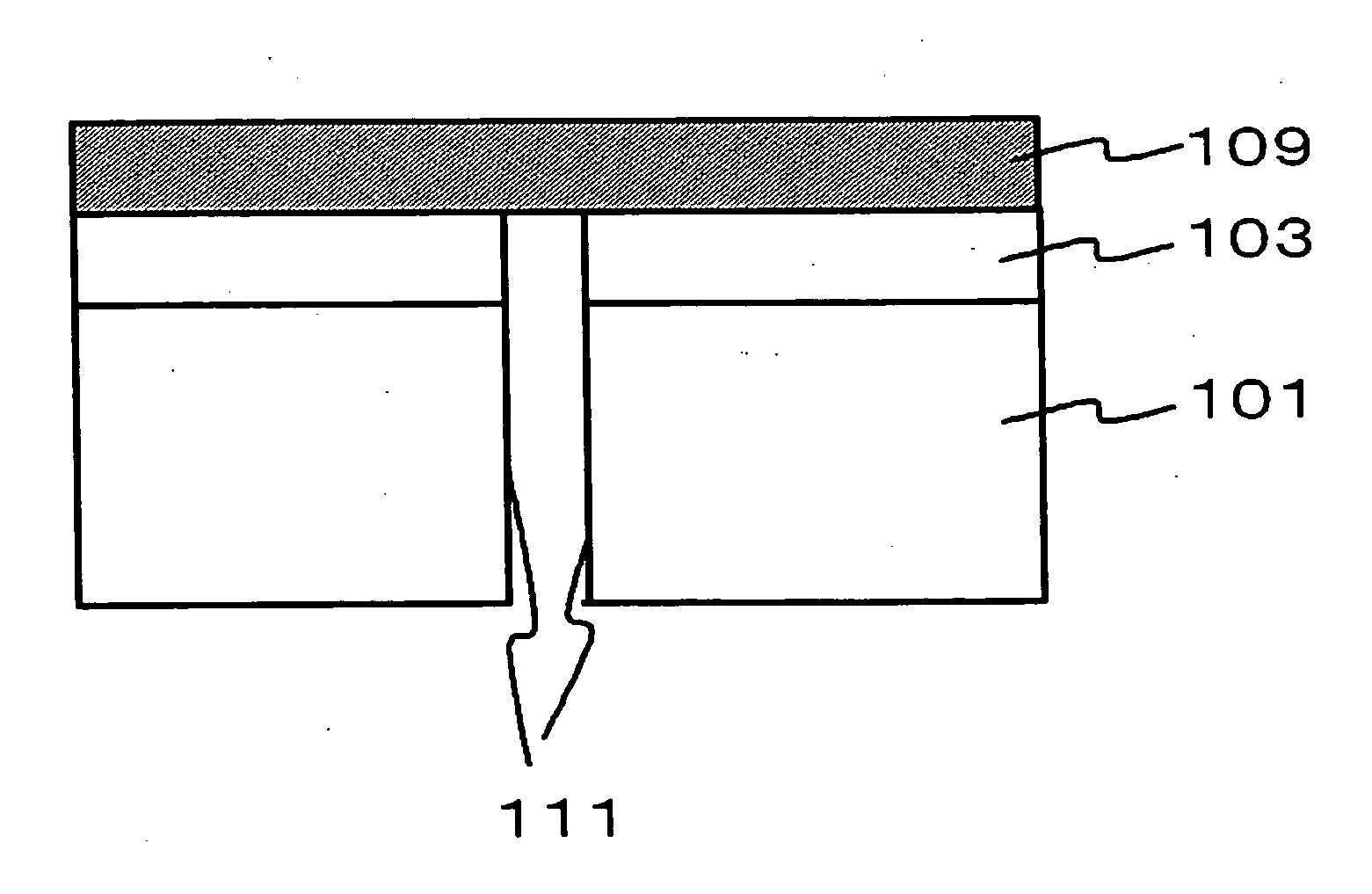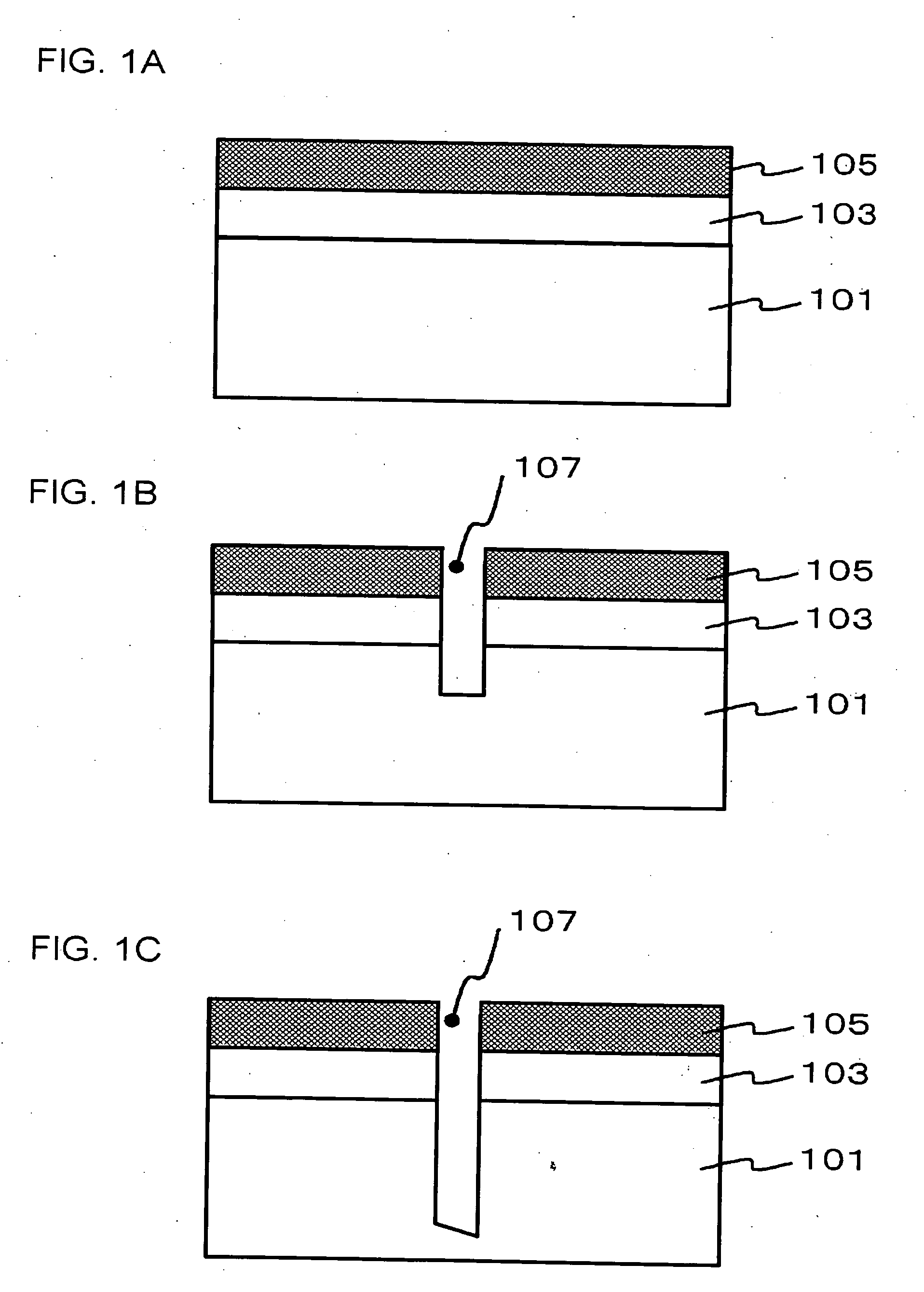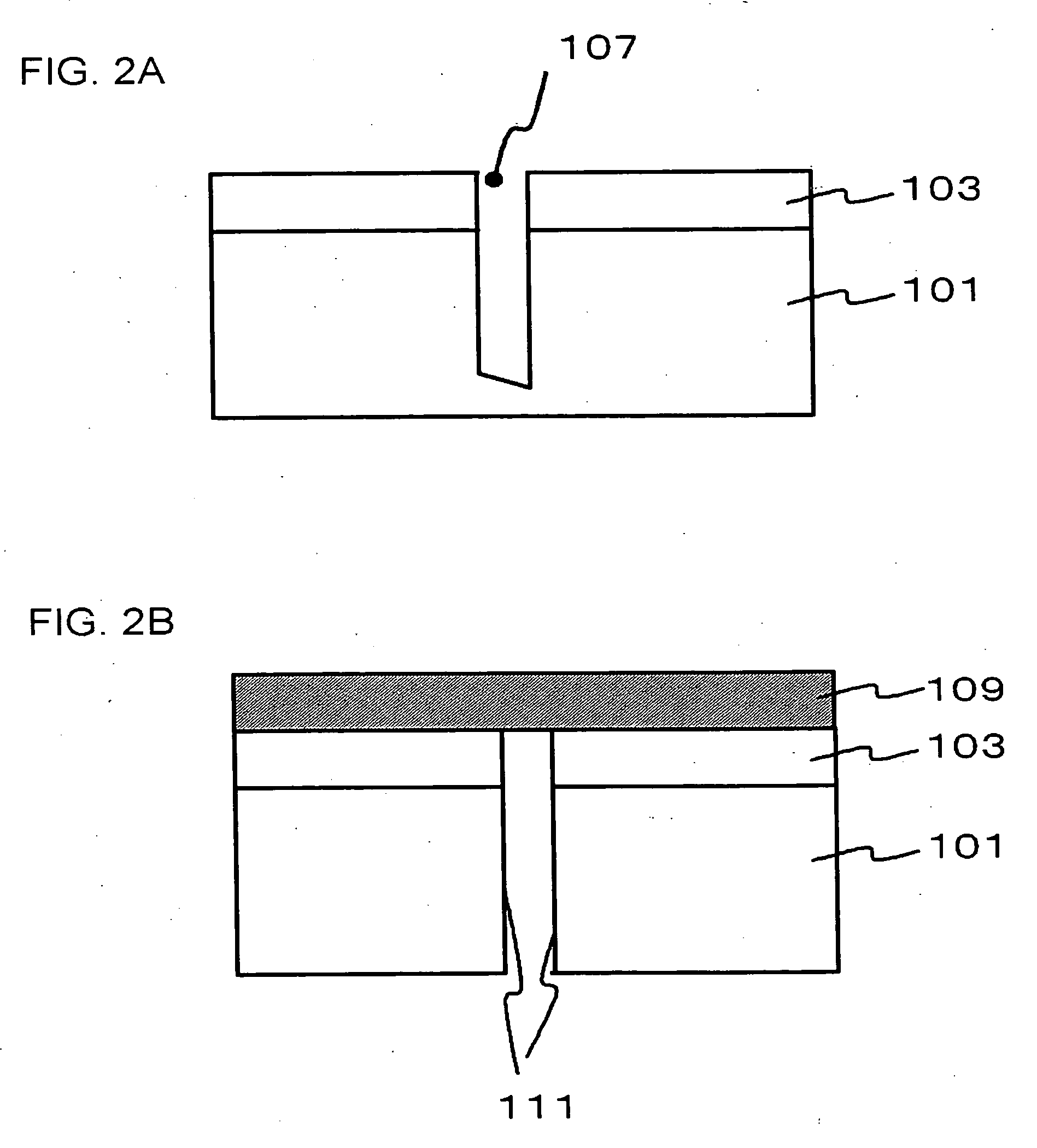Method for manufacturing semiconductor device
a manufacturing method and semiconductor technology, applied in the direction of semiconductor devices, printing, fastener tools, etc., can solve the problems of complex process step for removing materials, difficult to additionally remove silicon oxide films or interconnects in the process for etching the wafer, so as to reduce the processing width of the dicing process for the semiconductor wafer
- Summary
- Abstract
- Description
- Claims
- Application Information
AI Technical Summary
Benefits of technology
Problems solved by technology
Method used
Image
Examples
first embodiment
[0032]FIG. 1A to FIG. 1C, FIG. 2A and FIG. 2B are cross-sectional views, illustrating a process for manufacturing a semiconductor device of the present embodiment. FIG. 3 is a plan view, illustrating a configuration of the semiconductor wafer in a status of preliminary step to the status of FIG. 1A. FIG. 4 is a cross-sectional view illustrating a configuration of the semiconductor device obtained by procedures shown in FIG. 3, FIG. 1A to FIG. 1C, FIG. 2A and FIG. 2B. FIG. 4 represents the view corresponds to a cross-section along line A-A′ of FIG. 3.
[0033] First of all, the configuration of the semiconductor device according to the present embodiment will be described in reference to FIG. 3 and FIG. 4. A semiconductor device 100 shown in FIG. 3 and FIG. 4 is configured that a silicon wafer 101 is divided by dicing along dicing lines 120, and an interconnect layer 103 is provided on each of the divided silicon wafer 101. The interconnect layer 103 includes an insulating film (not sh...
second embodiment
[0092] In first embodiment, after the dry etching operation in step 103 (FIG. 1C), the protective film 105 is stripped (FIG. 2A), and the back surface grinding is conducted for the silicon wafer 101 to obtain a plurality of semiconductor devices 100 (FIG. 2B). In the present embodiment, the dry etch process for the silicon wafer 101 is further continued, in place of the back surface polishing, to divide the silicon wafer 101 into a plurality of semiconductor devices 100. More specifically, the operation for dividing the silicon wafer 101 into pieces in step 104 includes an operation for further removing the silicon wafer 101 in depth direction from the bottom of the trenched portion 107 via an etch process. The operation for removing the protective film 105 in step 106 is conducted after the after the operation for dividing the wafer in step 104.
[0093]FIG. 7A to FIG. 7C and FIG. 8A to FIG. 8C are cross-sectional views, illustrating a process for manufacturing a semiconductor device...
third embodiment
[0097] In the present embodiment, a pad electrode and a metal-plated bump are further provided on the interconnect layer 103, and thereafter, a dicing process is conducted. In this case, a plurality of semiconductor devices can similarly be obtained from one piece of the silicon wafer 101 by employing the process described in the above embodiments.
[0098]FIG. 9 is a cross-sectional view, illustrating a configuration of a semiconductor device of the present embodiment. A semiconductor device 130 shown in FIG. 9 further includes the following members, in addition to the configuration of the semiconductor device 100 shown in FIG. 1. More specifically, an insulating interlayer 131 is provided on an interconnect layer 103, and an interconnect 133 is buried within the insulating interlayer 131. Materials of the interconnect 133 may include, for example, conductive materials such as metals such as Cu or Al and the like. In addition, an electroconductive electrode pad 135 is provided on the...
PUM
 Login to View More
Login to View More Abstract
Description
Claims
Application Information
 Login to View More
Login to View More - R&D
- Intellectual Property
- Life Sciences
- Materials
- Tech Scout
- Unparalleled Data Quality
- Higher Quality Content
- 60% Fewer Hallucinations
Browse by: Latest US Patents, China's latest patents, Technical Efficacy Thesaurus, Application Domain, Technology Topic, Popular Technical Reports.
© 2025 PatSnap. All rights reserved.Legal|Privacy policy|Modern Slavery Act Transparency Statement|Sitemap|About US| Contact US: help@patsnap.com



